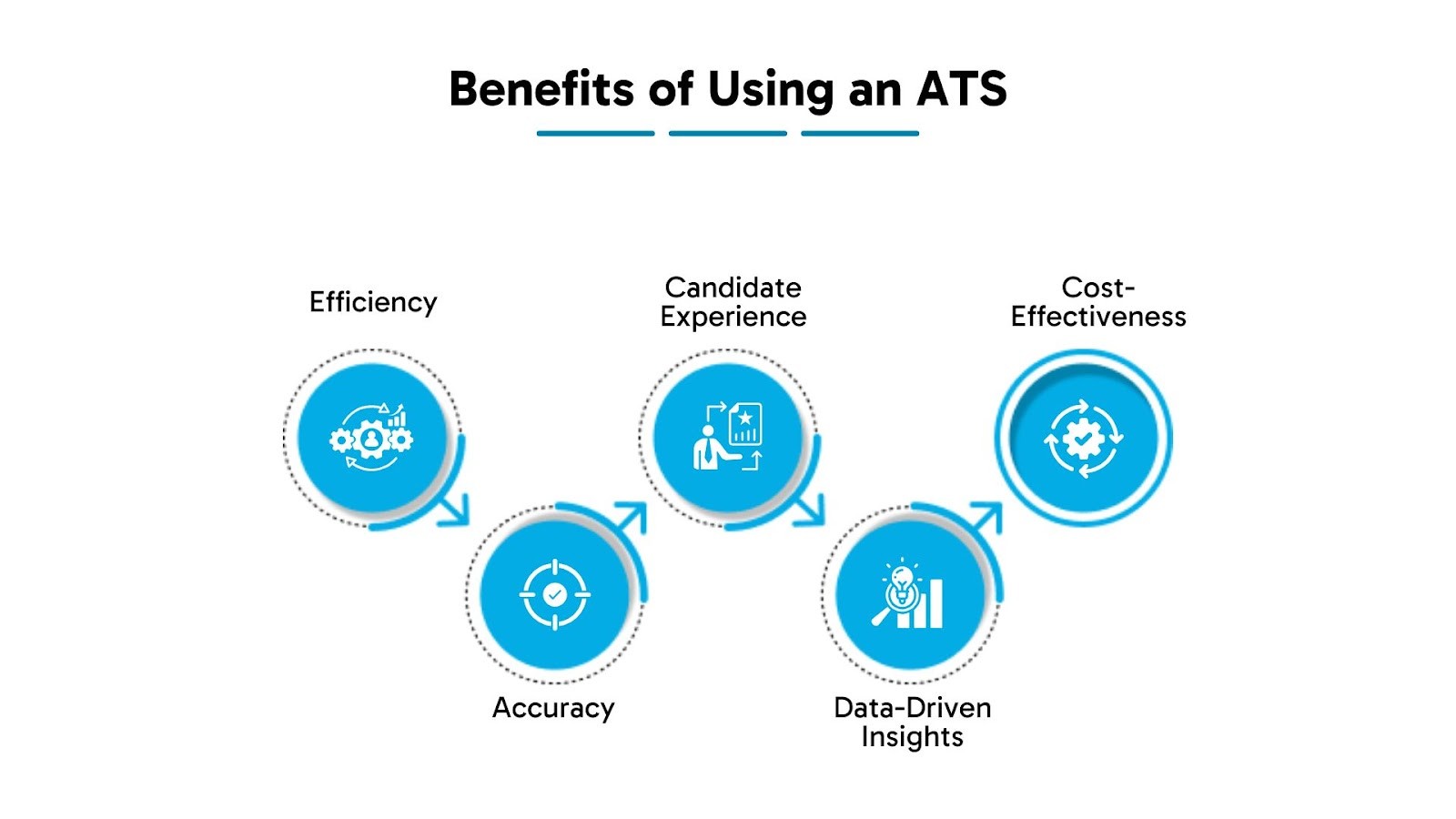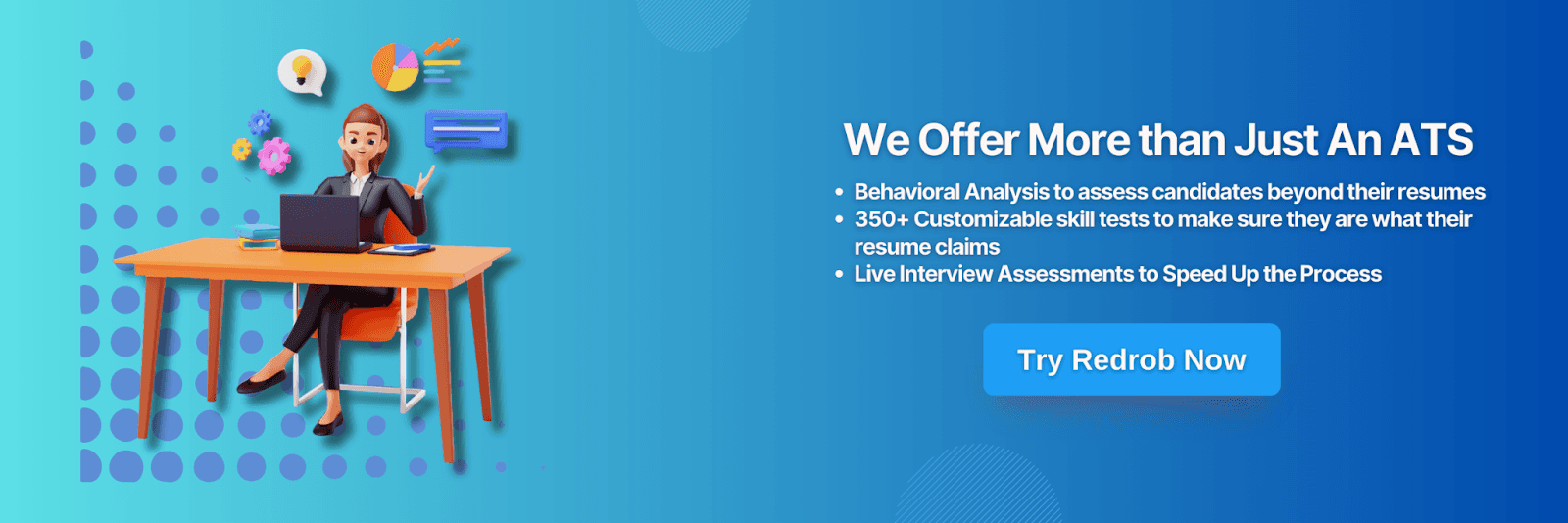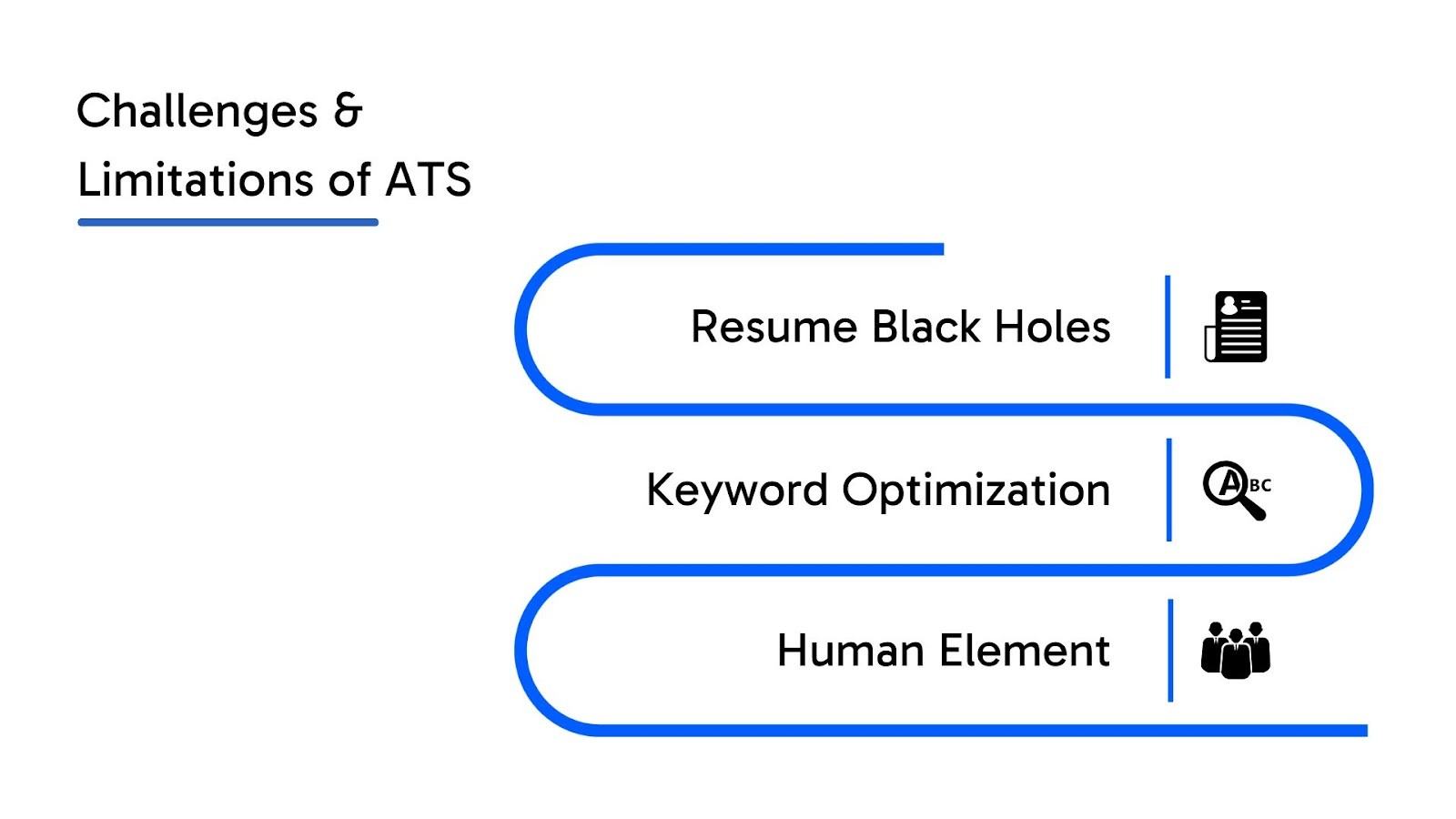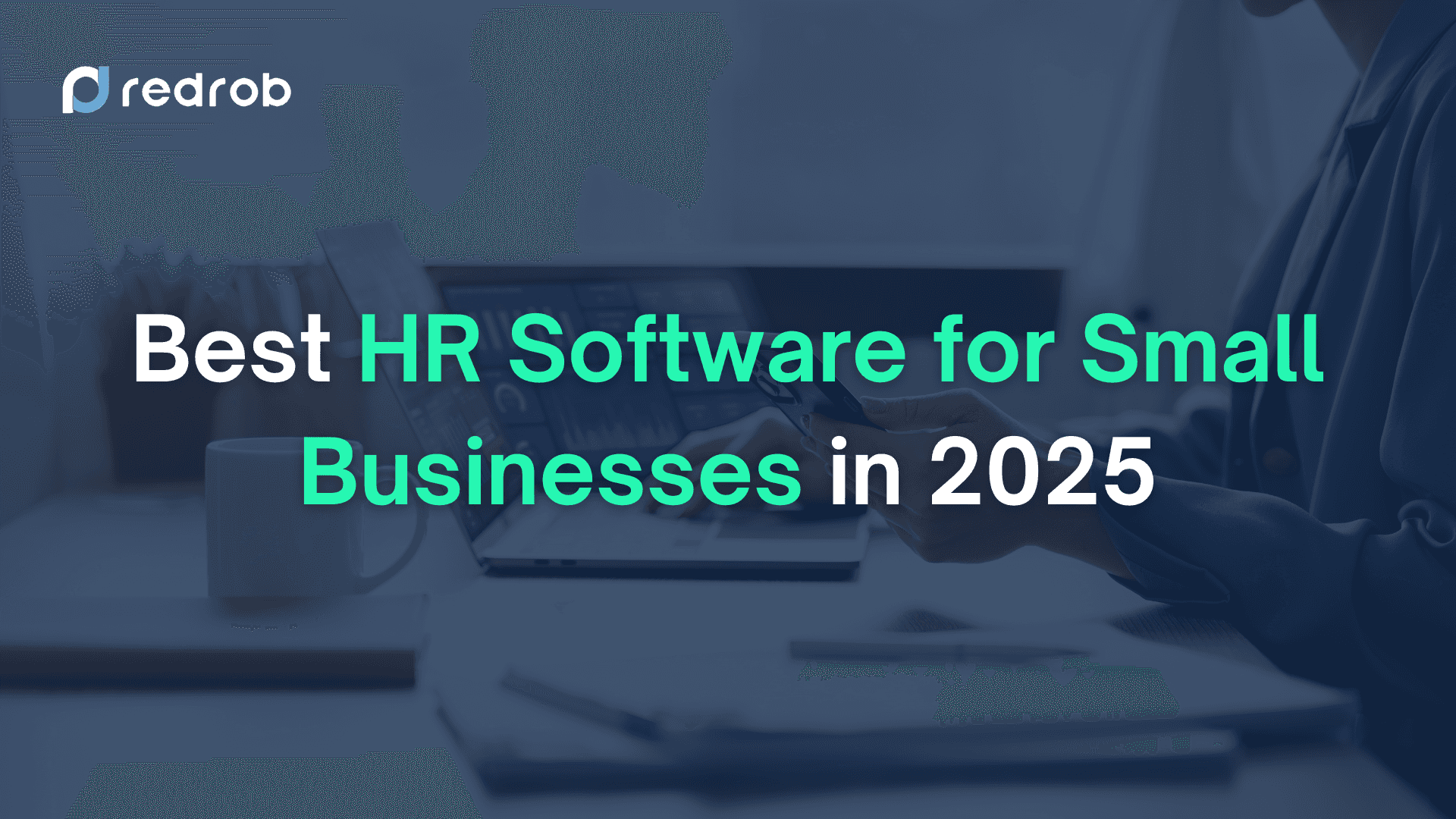Applicant Tracking Systems
7 mins read
•
Nov 14, 2024

Soumyata Singh
The recruitment process can be overwhelming without the right tools. Traditional hiring methods often involve sorting through countless resumes, coordinating interviews, and tracking candidates manually. This approach is time-consuming and prone to errors, leading to delays and even missed opportunities for hiring the best candidates. Companies now rely on technology to streamline recruitment to keep up with modern hiring demands.
An ATS helps you bring about significant changes to your recruitment approach. But what is the full form of ATS? It stands for "Applicant Tracking System," a software solution designed to simplify and automate recruitment tasks.
In this blog, you’ll learn more about an ATS. We’ll look at how it works, from resume parsing to candidate ranking. You'll also learn about its advantages, potential challenges, and best practices for making the most of an ATS.
What is an ATS?
An ATS (Applicant Tracking System) is a software application to streamline hiring processes. It helps recruiters manage job applications, organize candidate data, and automate tasks like sorting resumes and scheduling interviews.
An ATS simplifies recruitment by handling repetitive tasks and structuring the hiring workflow. For example, it can automatically sort resumes based on job-specific keywords, allowing recruiters to focus on the most qualified candidates. Many businesses today use ATS software to improve hiring efficiency, especially when managing a high volume of applicants. 98% of Fortune 500 companies rely on an ATS to manage recruitment.
Using an ATS saves time, reduces manual effort, and helps you avoid errors. Plus, it ensures a smooth experience for both recruiters and candidates, making it easier to find the best talent in less time.
How Does an ATS Work?
An Applicant Tracking System (ATS) performs multiple tasks to streamline hiring. But how exactly does it work? Below, we’ll explore the main functions of an ATS and how it helps you manage each stage of recruitment more efficiently.
Candidate Sourcing
An ATS helps you gather candidates from multiple channels, such as job boards, social media, and company websites. You can post job openings across various platforms with just a few clicks. Many ATS platforms also integrate with social media networks, making reaching a broader talent pool easier. This unified approach to sourcing saves time and ensures you don’t miss out on qualified candidates.
Resume Parsing
One of the most time-saving features of an ATS is resume parsing. This process automatically scans resumes and extracts key information like work history, skills, and education. By organizing data into structured fields, the ATS makes it simple to search and filter applications. With resume parsing, you can quickly identify candidates who meet the job requirements.
Candidate Screening
An ATS automates the initial screening process, saving you hours of manual review. It can sort applications based on job-specific keywords and preferred qualifications. For example, if the job requires five years of experience, the ATS flags applicants who meet this criterion. This way, you’re focusing only on qualified candidates from the start.
Candidate Ranking
To prioritize applicants, an ATS uses ranking algorithms that evaluate candidates based on relevance. These algorithms assign scores to each application, helping you identify top candidates faster. The ATS might rank a candidate higher if their skills, experience, and qualifications match the job description closely. This feature is especially useful when dealing with a large volume of applications.
Communication and Scheduling
Automated communication is another valuable feature of an ATS. It sends confirmation emails to applicants, schedules interviews, and handles follow-up messages. This automation keeps candidates informed and engaged, enhancing their experience throughout the hiring process. Plus, by handling reminders and scheduling, the ATS frees you up to focus on high-value tasks.
With these functions in place, an ATS takes on many of the tedious tasks in recruitment. Next, discuss the specific benefits you can expect from using an ATS.

Benefits of Using an ATS

Using an Applicant Tracking System (ATS) can transform your hiring process, offering numerous advantages. Here’s how the “full form of ATS” translates into tangible benefits for your recruitment efforts.
1. Efficiency
An ATS boosts recruitment efficiency by automating repetitive tasks like sorting resumes and scheduling interviews. Instead of spending hours on manual work, recruiters can focus on interviewing and hiring. This efficiency means faster hiring and a quicker turnaround on filling open roles. Studies show that companies using ATS software reduce their hiring time by 60%.
2. Accuracy
With an applicant tracking system, data entry errors are minimized. The system extracts and organizes candidate information accurately, reducing the chance of mistakes. For instance, resume parsing pulls details from resumes directly, ensuring correct information. By reducing human error, an ATS ensures accurate data, leading to better hiring decisions.
3. Candidate Experience
An ATS improves the candidate experience by informing applicants throughout the hiring process. Automated emails acknowledge applications, schedule interviews, and send follow-ups. This transparent communication keeps candidates engaged, even if they don’t get the role. A positive experience encourages candidates to apply again and recommend your company.
4. Data-Driven Insights
Applicant tracking systems provide data insights that help you improve your hiring strategy. You can track metrics like time-to-hire, source of hire, and applicant conversion rates. These insights show which sourcing channels bring in the best candidates, helping you allocate resources effectively. Data-driven hiring can lead to better outcomes and a more effective recruitment process.
5. Cost-Effectiveness
Using an ATS is cost-effective for businesses of all sizes. By automating tasks and reducing time-to-hire, an ATS cuts down recruitment expenses. Applicant tracking systems can significantly help you save hiring costs. These savings make a big difference for small teams or companies with high turnover.

These benefits illustrate why an ATS is essential considering today’s competitive hiring environment. Next, let’s explore the challenges of using an ATS.
Challenges and Limitations of ATS

While an ATS offers significant benefits, it also has certain challenges and limitations. Let’s take a closer look at some of these obstacles that can affect recruitment quality and fairness.
1. Resume Black Holes
One common complaint is the “resume black hole.” This happens when resumes get lost within the ATS, often because the system filters out applications that don’t match specific criteria. For candidates, it can feel like their applications were never even reviewed. Over 75% of resumes never reach a recruiter because they’re filtered out by the ATS. While this improves efficiency, potentially qualified candidates can be overlooked.
2. Keyword Optimization
To get past an ATS resumes need the right keywords. An ATS typically screens applications based on keyword matches for skills, experience, and job-specific terms. However, this can create a challenge for both candidates and recruiters. Candidates may focus on “keyword-stuffing” instead of emphasizing their actual skills. Recruiters, meanwhile, might miss out on excellent applicants who don’t use the “right” keywords. Understanding the complete form of ATS and how it works can help both parties prepare better—but keyword optimization remains a tricky aspect.
3. Human Element
While ATS systems are robust, they lack human judgment and empathy. Screening software can’t understand a candidate’s unique story or evaluate qualities like cultural fit. An ATS may filter based on criteria but miss the nuanced skills and experiences that make a candidate stand out. This is why human judgment remains essential. Combining an ATS with human input ensures a fairer, more balanced hiring process that looks beyond automated criteria.
Understanding these limitations can help you use ATS effectively while minimizing potential downsides. In the next section, let’s examine the best practices for getting the most out of your ATS system.
Best Practices for Using an ATS
To make the most out of an ATS, you must understand its inner workings and apply strategic approaches. Here are some best practices to help you increase your chances of standing out in the ATS process.
Keyword Optimization
Keywords are crucial in making sure your resume gets noticed. To optimize your resume and cover letter for an ATS, review the job posting for specific skills, qualifications, and job-related terms. Integrate these keywords naturally into your content, especially in your skills, work experience, and summary sections. However, avoid overloading your resume with keywords. A well-balanced approach ensures your application feels authentic and stands out in the ATS.
Tailored Applications
Each job posting has unique requirements, and tailoring your application to match these specifics can significantly increase your chances of getting noticed. Adjust your resume, cover letter, and skills section to align closely with the job description. According to a survey, recruiters are likelier to shortlist candidates whose applications feel targeted and specific. Customising each application shows that you’re not only interested but also attentive to the needs of each role.
Building a Strong Online Presence
A solid online presence can support your application in the ATS process. Many companies look up candidates online or require ATS-integrated profiles on platforms like LinkedIn. Make sure your LinkedIn profile is fully updated, professional, and highlights relevant skills. Include keywords related to your job field in your profile summary, job titles, and skill sections to improve visibility. Having a solid online profile helps reinforce your qualifications and adds credibility to your application.
Networking and Referrals
Networking and referrals can be powerful allies in the recruitment process, sometimes even allowing you to bypass the ATS altogether. Building connections with current employees or industry professionals can boost your application, often bringing it directly to the recruiter’s attention. Studies show that referrals can increase your chances of being hired nearly four times. Use your network to connect with people at your target companies, and don’t hesitate to ask for a referral when you find the right opportunity.
These best practices can help you make a stronger impression in the ATS process.
Conclusion
We hope this blog answered the question "what is the full form of ATS," and outlined best practices for its use. An ATS streamlines the hiring process, improves efficiency, enhances data accuracy, and improves candidate experience. It also provides valuable insights that allow you to make data-driven hiring decisions while keeping costs down.
If you’re considering an ATS, now is a great time to explore your options. With so many platforms available, you can find one that fits your team’s needs and recruitment goals. Embracing an ATS can transform your hiring process, making it faster, more intelligent, and more organized.
Looking ahead, ATS technology will likely continue evolving with AI and data analytics advancements. New features, like predictive analytics and deeper candidate matching, may soon become the norm, offering even more refined hiring tools. Investing in an ATS now can help you stay ahead and prepare for these exciting developments.



